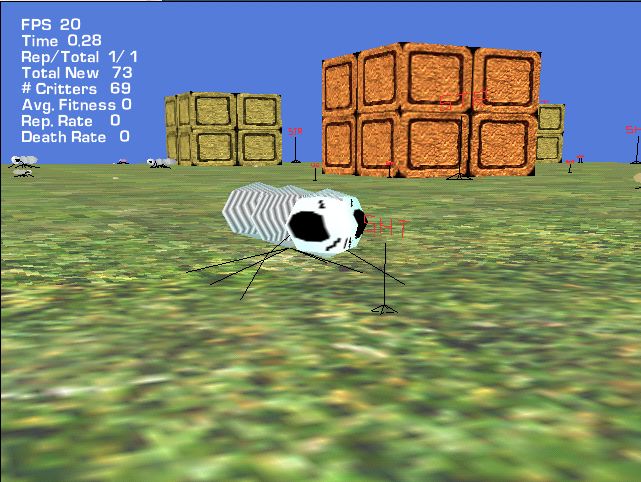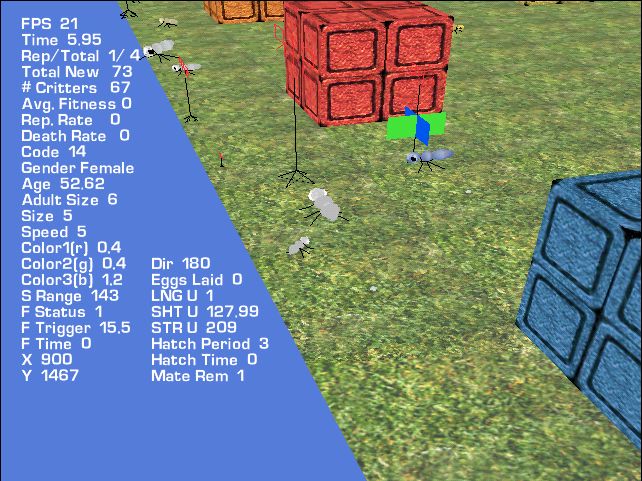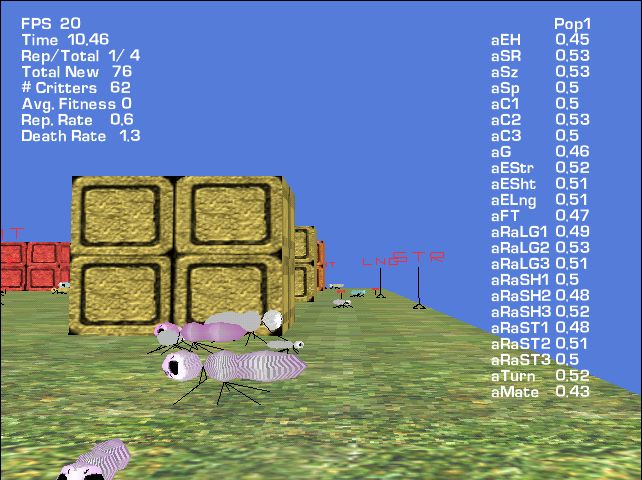
Screen Shots
1. The critters live on a virtual
field. The readout shows the frames per second (FPS), time (a
clock runs in the model continuously as the simulation progresses),
the replicate number and total number of replicates requested,
the total number of critters that have been generated in this
run, the number of critters, average fitness (average number of
eggs laid), reproductive rate, and death rate.

2. Close up of a critter. This critter was moving rapidly
toward a close, attractive resource. There is a linear relationship
between speed and short-term energy unit use. The faster they
move, the more energy they burn. The energy cost and the number
of type of resources are set by the user at the beginning of the
simulation.

3.
Critter characteristics can be seen in real time. The lower left
portion of the screen shows the parameters for the critter marked
on the screen. Every critter generated has a unique 'Code' number
assigned to it. The gender, age, size limit (adult size), speed,
color value, sensing range, current position (X, Y) are among
the parameters listed.


Movies
| Low Quality (3.4 MB) |
|
| High Quality (7.3 MB) |
|